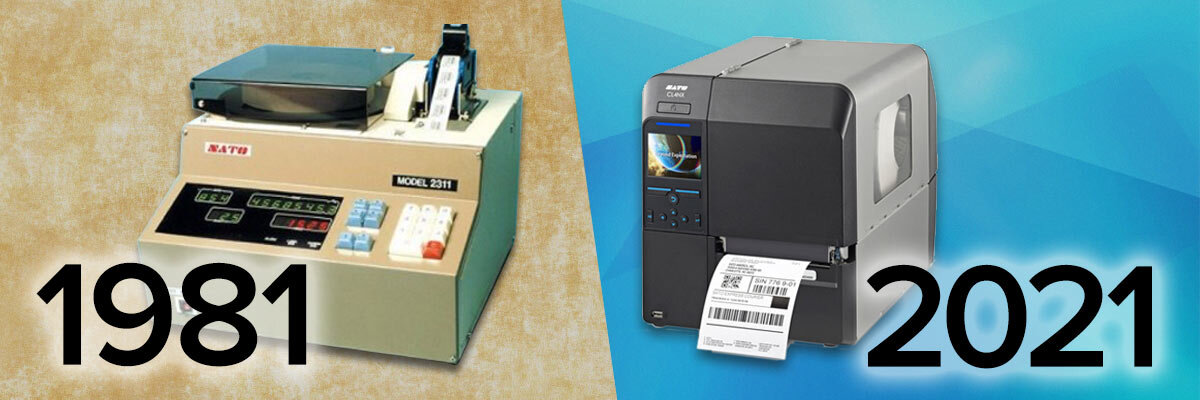Thermal Printers Then and Now
The first barcode used in retail was a circular bullseye design used briefly before the UPC code was implemented.
20+ Years in the Waiting
Great ideas sometimes need decades for technology to catch up with them. In 1952 Norman Joseph Woodland and Bernard Silver patented the first barcode, which looked like a bullseye. The very first barcode was used to label Railroad cars. However, they were not popularized in retail until June 26, 1974, when the first UPC barcode was scanned at Troy’s Marsh Supermarket, in Ohio, using an IBM NCR 255 scanning system.
The product scanned was a multipack of Wrigley’s Spearmint Gum. The success of scanning such a small barcode, made everyone aware that labeling millions of products with these barcodes was going to be the wave of the future.
The vertical bar UPC barcode has been used in retail since 1974.
The First Thermal Label Printer
Printing those barcodes onto labels would take another seven years. Through trial and error, SATO developed the world’s first thermal transfer (TT) barcode printer, the M-2311 in 1981, giving retailers, wholesalers and manufacturers the ability to print quality, durable barcode labels. Thermal printing is the process of electronically heating up diodes (or dots) on the print head, that contact a roll of carbon ribbon melting warm black resin-wax onto a substrate, or label roll, by maintaining pressure on all three. The fundamentals have not changed to this day, but the speed and technology most certainly have.
Thermal Printer Manufacturers
Today Sato is one of several manufacturers that produce desktop, industrial and mobile printers that print direct thermal labels without using a ribbon or more permanent labels by using Thermal transfer ribbons. These manufacturers include; Sato, Zebra, Honeywell, (Honeywell includes Datamax & Intermec), TSC, Citizen Systems, Toshiba TEC, Epson, Star Micronics, Evolis, Printronix, and Primera.
Digital Technology
The advent of computer technology in the 1980’s and 90’s lead to improvements in barcode quality, print-speed accuracy and the ability to receive many different substrates, such as tags, wristbands, and even plastic pot stakes. Other printing technologies also evolved, such as Inkjet Printers, Laser Printers, Dot-Matrix Printers and now Digital Color Printing. This potential growth of the AutoID industry is what lead Paragon Print Systems, in 1994 to expand their label printing services into Barcode Factory, which has become one of the leading suppliers of barcode printers, mobile computers, scanners, RFID installations and other versions of label printers.
Barcode Printers Today
Produce, manufactured goods, shipping boxes, chemical samples, and even people can be identified using some type of label or tag. Thermal printing is by far the most common because of the cost, speed and reliability. Specialty Printers have been designed to find a place in many niche markets.
Other Specialty printers include:
Full color digital inkjet Printers: Color product labels, lab samples and GHS Warning labels.
Dot Matrix: Food industry and other, ribbon free uses.
Horticultural Printers: Tree wrap and hang tags, and pot stakes.
Ticket Printers: High speed black and white printers
RFID Printers: Capable of encoding RFID Inlays inside of labels.
Line-Feed Printers: Pin-fed form printers with unequaled durability.
Kiosk Printers: Mounted inside counters, these large capacity receipt printers are perfect for the POS environment.
I.D. Card Printers: Identification Cards printed in color with mag stripes and safety features for personnel.
Direct Parts Marking (DPM) etches a barcode directly into a metal substrate or tool.
Planning for the Future
Some time has passed since 1981 but printing technology continues to improve. Choosing or improving your labeling process is closely connected to your entire Auto ID and data collection process. Consider a discussion with one of BarcodeFactory trained specialist’s to help you plan for the future, save money and grow.




